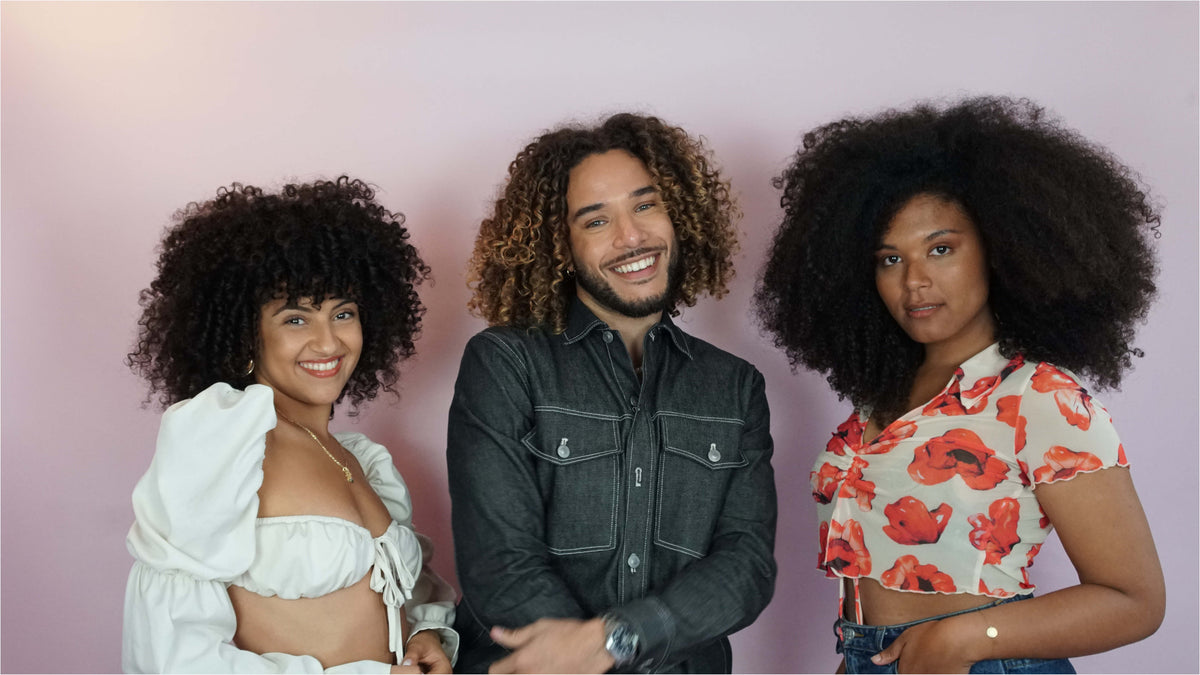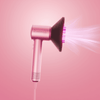
Understanding your hair and curl type
The goal of the Les Secrets des Loly's team is and always has been to help the community take care of their textured hair. But there is a first step before finding the right products and applying the right gestures: understanding your hair type.
Between kinky hair, coily hair, curly hair, wavy hair, but also the differences within the same hair category, it's confusing! Then there is the porosity and also the needs of the hair which can change with the years and habits. In this article, we will help you to find out what type of hair you have, so that you can take care of it:
What type of texture?
André Walker's grid
According to the André Walker grid, textured hair can be grouped by type and curl similarity. In the order defined by this grid, textured hair ranges from light curls to very regular curls: wavy hair, curly hair, coily hair and kinky hair.
Leurs ondulations, boucles et virages sont la cause de plusieurs choses. La déshydratation : leTheir waves, curls and twists are caused by several things. Dehydration: the natural sebum does not flow down the hair and the humectants supplied to the hair are not retained in the fibre. But also breakage: the hair is weakened by its very shape and by heating products. Textured hair therefore tends to be drier than straight hair. Here are the details of the textures in the André Walker grid:
1A à 1C : Straight hairCheveu lisse.
2A : Wavy, very light hair that can stiffen quickly
2B : Wavier hair, with more pronounced waves.
2C : Very wavy hair, very pronounced waves.
3A : Curly hair, wide curls.
3B : Curly hair, slightly tighter curls.
3C : Coily hair, tight curls like a spring.
4A : Kinky hair, very tight curls, forming a Z shape.
4B : Kinky hair, very tight curls, almost not visible.
4C : Kinky hair, very tight Z-shaped curls.

Evolution of texture
On our social medias, hundreds of you write to us every day to ask for advice, tips or simply to share your hair journey. So thank you for that!
Melissa, our hair expert, advises you every day and tries to find answers to your hair questions. And among them, one comes up very often: "Will I find the same texture as 3 years ago?", "Why don't I have the same curls as before my pregnancy?"
A hair type, whether kinky, coily, wavy or curly can evolve several times in a lifetime. On average, it can change, slightly or dramatically, every 7 years, and this can be due to several factors:
- the evolution of our hormones (in women and men)
- the use of short or long term medication
- pregnancy, menopause
- diet, lifestyle, stress...
All these factors cause your hair texture to change and force you to adapt your hair routine. This is just to discover another part of your personality :)
Understanding the nature of your fibre
Porosity
Hair porosity is its ability to absorb moisture from the outside and retain it within the hair fibre. Whether or not the scales (or cuticles) on the surface of the hair fibre open up is an indication of the level of porosity. Low or high porosity will allow you to adapt your hair routine by focusing more on nutrition for very porous hair (i.e. with scales that are too open) or on heat for hair that is not very porous (too closed).
But how do you know your level of porosity? You will find the explanation of the test and advice in this article!
Thickness
The thickness of the hair will be more visible to the naked eye or felt when applying your products. It has nothing to do with volume but is characterised by the thickness of the fibre itself.
Thin hair will need lighter products because the fibre will not be able to absorb too much product, whereas thick hair will be able to absorb more products, especially those rich in nutrition.
Understanding your needs
Dry and dehydrated hair
Dehydrated and often dull hair will need moisture-rich products regularly. Moisture is the combination of water and humectants such as aloe vera or glycerin that will help soften the fibre and keep your curls bouncy.
The Repair Time mask will be your best ally week after week to regain moisture from within.
Brittle and split hair
To strengthen textured hair over the long term, you can take regular oil baths before your shampoo. The Sérum Croissance, a concentrate of vegetable oils and essential oils will be perfectly suited.
Relaxed hair, loss of natural curls
Do your curls relax quickly and can't reform them without finger coils? You may need some clarification or going natural. After using chemicals, thermal devices or doing a lot of coloring, your hair is very damaged and will need a detox treatment. Do not hesitate to do treatments once a month for a clarification or once a week for a transition with the Tropical Détox.
The tips of the team LSL
We always advise to combine hydration with nutrition in order to seal and retain hydration and above all close the scales of the hair.
*The Sérum Croissance is not recommended for children, pregnant and nursing women because it contains essential oils.










